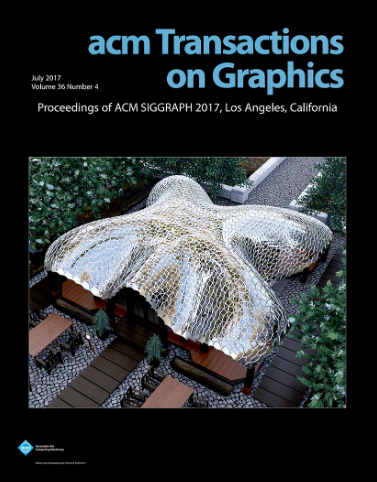QUASAR: Quad-based Adaptive Streaming And Rendering
IF 9.5
1区 计算机科学
Q1 COMPUTER SCIENCE, SOFTWARE ENGINEERING
引用次数: 0
Abstract
As AR/VR systems evolve to demand increasingly powerful GPUs, physically separating compute from display hardware emerges as a natural approach to enable a lightweight, comfortable form factor. Unfortunately, splitting the system into a client-server architecture leads to challenges in transporting graphical data. Simply streaming rendered images over a network suffers in terms of latency and reliability, especially given variable bandwidth. Although image-based reprojection techniques can help, they often do not support full motion parallax or disocclusion events. Instead, scene geometry can be streamed to the client, allowing local rendering of novel views. Traditionally, this has required a prohibitively large amount of interconnect bandwidth, excluding the use of practical networks. This paper presents a new quad-based geometry streaming approach that is designed with compression and the ability to adjust Quality-of-Experience (QoE) in response to target network bandwidths. Our approach advances previous work by introducing a more compact data structure and a temporal compression technique that reduces data transfer overhead by up to 15×, reducing bandwidth usage to as low as 100 Mbps. We optimized our design for hardware video codec compatibility and support an adaptive data streaming strategy that prioritizes transmitting only the most relevant geometry updates. Our approach achieves image quality comparable to, and in many cases exceeds, state-of-the-art techniques while requiring only a fraction of the bandwidth, enabling real-time geometry streaming on commodity headsets over WiFi.类星体:基于四元的自适应流和渲染
随着AR/VR系统的发展,需要越来越强大的gpu,将计算与显示硬件物理分离成为一种自然的方法,以实现轻量级,舒适的外形。不幸的是,将系统拆分为客户机-服务器体系结构会在传输图形数据方面带来挑战。简单地在网络上流式渲染图像会受到延迟和可靠性的影响,特别是在带宽可变的情况下。虽然基于图像的重投影技术可以提供帮助,但它们通常不支持全运动视差或错位事件。相反,场景几何图形可以流式传输到客户端,允许本地渲染新视图。传统上,这需要大量的互连带宽,不包括实际网络的使用。本文提出了一种新的基于四边形的几何流方法,该方法具有压缩和根据目标网络带宽调整体验质量(QoE)的能力。我们的方法通过引入更紧凑的数据结构和时间压缩技术,将数据传输开销降低了15倍,将带宽使用降低到100 Mbps,从而推进了之前的工作。我们优化了硬件视频编解码器兼容性的设计,并支持自适应数据流策略,该策略只优先传输最相关的几何更新。我们的方法实现了与最先进的技术相当的图像质量,在许多情况下甚至超过了最先进的技术,而只需要一小部分带宽,通过WiFi在普通耳机上实现实时几何流。
本文章由计算机程序翻译,如有差异,请以英文原文为准。
求助全文
约1分钟内获得全文
求助全文
来源期刊

ACM Transactions on Graphics
工程技术-计算机:软件工程
CiteScore
14.30
自引率
25.80%
发文量
193
审稿时长
12 months
期刊介绍:
ACM Transactions on Graphics (TOG) is a peer-reviewed scientific journal that aims to disseminate the latest findings of note in the field of computer graphics. It has been published since 1982 by the Association for Computing Machinery. Starting in 2003, all papers accepted for presentation at the annual SIGGRAPH conference are printed in a special summer issue of the journal.
 求助内容:
求助内容: 应助结果提醒方式:
应助结果提醒方式:


